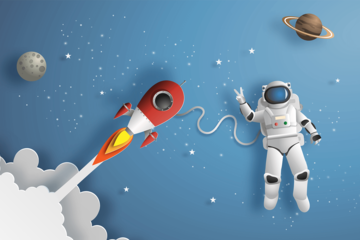Naive Bayes is classification approach that adopts the principle of class conditional independence from the Bayes Theorem. This means that the presence of one feature does not impact the presence of another in the probability of a given outcome, and each predictor has an equal effect on that result. There are three types of Naïve Bayes classifiers: Multinomial Naïve Bayes, Bernoulli Naïve Bayes, and Gaussian Naïve Bayes. This technique is primarily used in text classification, spam identification, and recommendation systems.

CULTURE AND SOCIETY
Technological singularity
BY AAP Bridge at AAPBridge
Many researchers are not concerned with the idea of AI surpassing human intelligence in the near or immediate future. This is also referred to as superintelligence, which Nick Bostrum defines as “any intellect that vastly outperforms the best human brains in practically every field, including scientific creativity, general wisdom, and social skills.” Despite the fact that Strong AI and superintelligence is not imminent in society, the idea of it raises some interesting questions as we consider the use of autonomous systems, like self-driving cars. It’s unrealistic to think that a driverless car would never get into a car accident, but who is responsible and liable under those circumstances? Should we still pursue autonomous vehicles, or do we limit the integration of this technology to create only semi-autonomous vehicles which promote safety among drivers? The jury is still out on this, but these are the types of ethical debates that are occurring as new, innovative AI technology develops.
New Section
INSTRUCTIONS:
New Section
INSTRUCTIONS:
neural networks process training data by mimicking the interconnectivity of the human brain through layers of nodes. Each node is made up of inputs, weights, a bias (or threshold), and an output. If that output value exceeds a given threshold, it “fires” or activates the node, passing data to the next layer in the network. Neural networks learn this mapping function through supervised learning, adjusting based on the loss function through the process of gradient descent.

